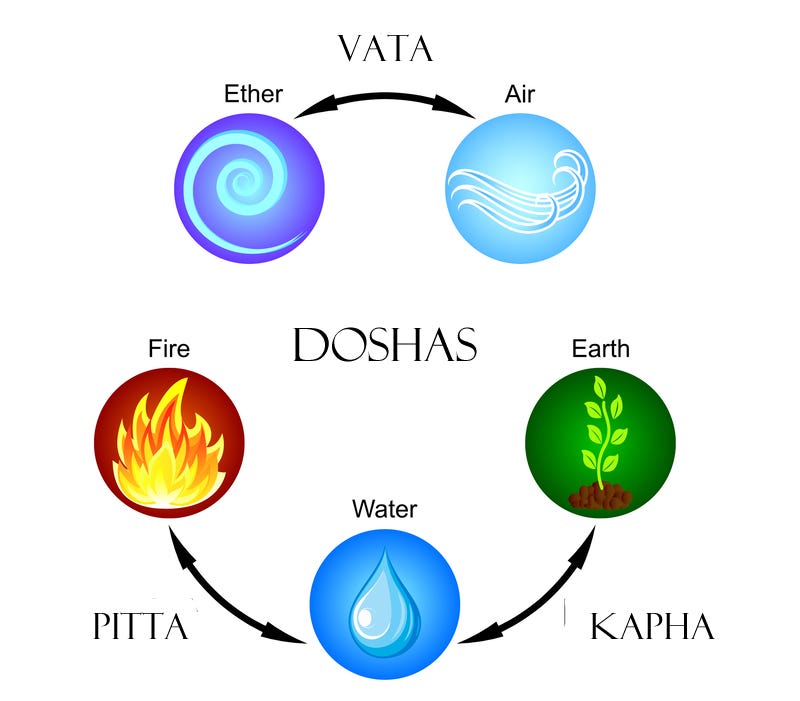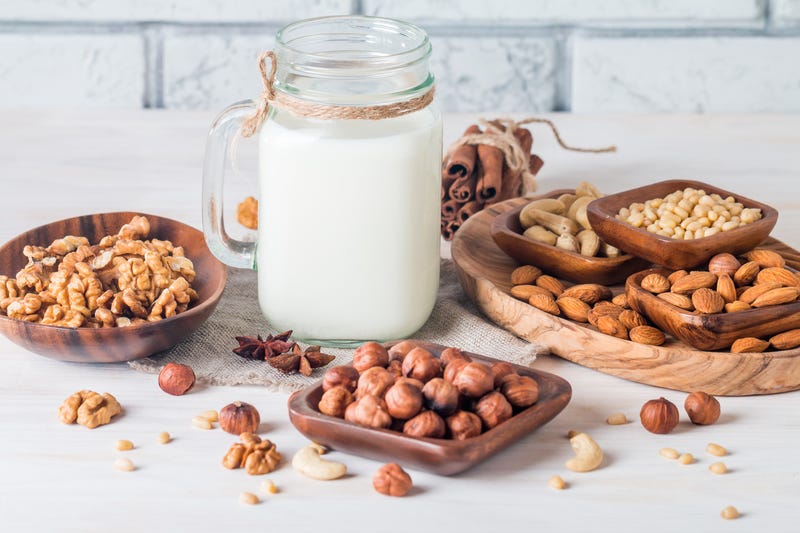Balaji announced that I would be posting vegetarian recipes. Actually, I was in the middle of writing on why memory should actually improve with age . . . so sit tight, that post is in the queue!
Deciding where to start is a challenge. In Ayurveda, foods are classified according to how they affect us. For example, a yogi eats mainly or even exclusively sattvic foods. These are calming and do not stir up energies. They are nutritious and also comply with the spiritual dedication to a life of ahimsa, harmlessness. Sattvic foods are fresh and can be eaten raw or lightly cooked. Spices are used sparingly and are not as hot as rajasic spices. For example, one can use fenugreek as well as fennel, dill, basil, small amounts of ginger, turmeric, and/or galangal, and coriander seeds and leaves¹, but not chili peppers! The sattvic diet is a little on the sweet side with many fresh fruits, some nuts, but not peanuts, which are really legumes, as well as whole grains like quinoa and rice. The sattvic diet usually includes aged honey, milk, and ghee, but vegan alternatives are an option since there are many alternatives to milk varying from coconut milk to milks made from nuts or oats or many other options. I am very partial to cashew and coconut milk with a dash of Himalayan salt. For me, this is tastier than milk made from almonds or hazel nuts, but I have yet to try macadamia and pistachio nuts. I am sure both are delicious if the nuts are fresh. This would be true of Brazil nuts also if they are really fresh, but what we get in our supermarkets is nothing like what one finds in Brazil!
Unlike the four food groups that we studied in school, the Ayurvedic approach relies on the particular action of the foods and whether the food contributes to clarity, action, or dullness. Lest anyone think that they cannot adjust to a vegetarian diet, think again. Tulsi Gabbard is an example of someone who loves to share her recipes and family feasts. She is a vegan as is Rumble journalist Glenn Greenwald. The list of vegans and vegetarians is very long and includes athletes, actors, politicians, entrepreneurs, and famous individuals from Leonardo da Vinci to Mahatma Gandhi. As mentioned in the last post, a person may be born into a vegetarian family or make the decision to change the diet for health or philosophical reasons. If making the change later in life, some new culinary skills may be required.
Years ago, I published my recipe for kicharee, a dish made from lentils and rice with vegetables and spices to taste. It can be used indefinitely as a fast, but many people find it time consuming to make so they freeze or refrigerate it. According to Ayurveda, this makes the food tamasic, dulling. Not only has the food lost some vitality, but reheating food can affect the chemistry of the food, especially the oils.
For some people, the ideas I want to share are totally new and for others, it is too basic, but let me create some scaffolding to make it easier to put the pieces together, but first, a little story.
Years ago, a colleague told me about a way to rejuvenate that is called kaya kalpa in Ayurveda. This involves a special diet, normally of milk and herbs, and 40 days in total darkness. Usually, people go into a coma for part of that time, but there are watered down versions of this that are less austere. I won’t say much right now except that there are preparations to make, and I found that even with absolutely fresh raw milk, I was producing too much mucus so I looked for a truly comparable substitute for milk and tried it on myself for more or less three years.
To give this a little more context, soy alternatives are easily found, but soy milk is made from beans, not from cows. It is vatagenic, meaning that it aggravates the gaseous substances without actually having a profile similar to milk which is kaphagenic. These words may not be familiar to everyone, but everything that is created has a matrix that is etheric and then a combination of four elements that in descending order of vibration are air, fire, water, and earth. What does this mean? Air is not nothingness but rather wind that causes movement. If there were no air, there would be total stagnation. I will even argue that it is air that causes blood to circulate. We all agree that the respiratory system depends on air, but if we take blood from the body and watch it under a microscope, it moves volitionally without any pumping by the heart. Think about it. Air is inherent in everything that is created and even bone tissue has lots of holes that are filled with air which is why fractures are likely when the vata dosha is aggravated. Vata conditions are also painful because our tactile sense is acute with the air element. Worded a little more simply, the sense of touch is ruled by air so sensations are very strong when the air element is elevated. If you are unsure of this, watch what happens when someone is startled.
To complete this outline, fire rules light and the sense of sight; water governs the sense of taste; and earth is related to the sense of smell. This leaves the sense of hearing, and this is etheric so sound is what shapes structure and is therefore very important to everything that is, even rocks.
Now, try to think of all food as a combination of elements. Ether and air combine but if exaggerated, they produce vata disorders. This affects the nervous system and all the “empty” spaces in the body that are “space filled with air” which is why our lungs can breathe, and we can speak using the mouth with the tongue in various positions to affect the exact sound produced. To function perfectly, the spaces must allow for freedom of movement so mucus deposits, plaque, and congestion interfere with circulation and the correct functioning of air element.
Fire is needed for digestion. All the chemicals in the gastrointestinal system are governed by fire, and all transformation of dense nutrients into substances the body can utilize depend on the action of fire. Likewise, purification involves some fire so the reality is that everything we ingest is cooked internally even if consumed raw. This is why even a yogi may benefit by some food that is cooked or that has spices added.
To make this as clear as possible, we can use milk as an example. Warm milk, perhaps with some elegant spices like cardamom and galangal (sometimes called Thai ginger) will be easier to digest than cold milk straight out of the refrigerator. However, yoghurt and kefir are easy to digest because they are acidic and contain probiotics. Likewise, lassi is easier to digest, but ice cream is hard to digest, not only because of the sweetness but the combination of cold and sweetness makes ice cream kaphagenic. I have a recipe for homemade ice cream that overcomes this obstacle. I make it with carrot juice, milk or coconut milk, and lots of ginger and cardamom with honey or maple syrup crystals for sweetener. It is very easy to digest and tastes incredible. One can also add essential oils or CO2 extracts of plants to homemade ice cream, and this can be tasty as well as making the ice cream easier to digest.
For all intents and purposes, most foods, even beans and lentils, can be rendered more digestible by adding spices, and also making sure that the beans are thoroughly cooked and tender. Warning: do not add salt before the beans are thoroughly cooked!
Now that we have this foundation, we can see that substituting tofu for dairy products does not usually have the desired outcome. Yes, it is a protein as are dairy products, but tofu aggravates the vata dosha whereas dairy products aggravate the kapha dosha. Both extremes can be alleviated with spices, but the effect will still be different since the main ingredients are still what they are. Substituting a nut for dairy products usually works a little better, but I have not seen marvelous substitutes in grocery stores. Yes, there are some liquids, but they generally fail the taste test. These are however easy to make at home in a blender and will be superior in taste and texture. Non-dairy cheese is a little more challenging. It may or may not melt in the same way as cheese or retain its shape as tofu does. The taste may be passable, but sometimes the aesthetics leave something to be desired.
To round out this installment, a bridge to what we learned in nutrition classes might help. Protein is vatagenic, fats and oils are pittagenic, and carbohydrates are kaphagenic. In order to apply this, think of realistic amounts of each food. Because so many people are calorie conscious, they might be tempted to lower their intake of fats and oils, 9 calories per gram, but this may adversely affect digestion, nerve sheaths, and joints. It would be wise instead to use extremely high quality oils in the recommended amount. All oils are sensitive to light, heat, and exposure to air. Making sure that oils come from organic sources, that they are cold pressed, and that they are in containers that do not allow light to penetrate is important. Think of the rows and rows of oils in supermarkets in transparent bottles, even displayed in windows with sun beaming down on them! Many people can experience a 30-50% improvement in health simply by using proper quality oils . . . and keeping the lid on except when pouring!
As people age, many have creaky joints, dry skin and wrinkles, and perhaps nervous twitches. My favorite oils are ghee, pumpkin seed oil, poppy seed oil, and sesame oil, but sunflower is totally acceptable and usually less pricey.
Copyright by Dr. Ingrid Naiman 2023 || All Rights Reserved
For permission to quote, please contact the author. Sharing via e-mail and posting links are welcome so long as the author and source are properly cited. Reprinting is strictly prohibited.
Footnotes:
¹ Remember, do not eat cilantro if you have amalgam fillings!
Image Credits:
Doshas: Zanna Bojarsinova | Dreamstime.com
Vegan Milk: Petr Goskov | Dreamstime.com
Ice Cream: https://www.freepik.com/premium-photo/vegan-carrot-ice-cream_5455491.htm






